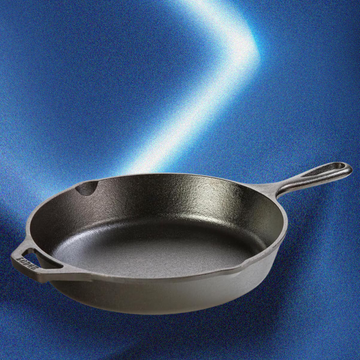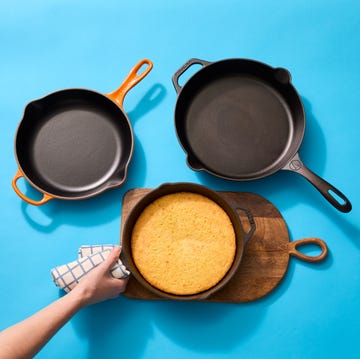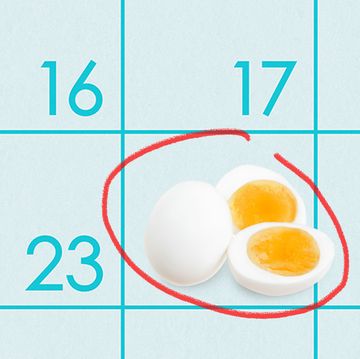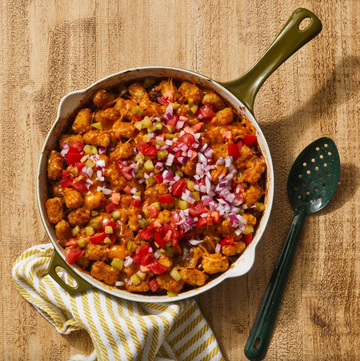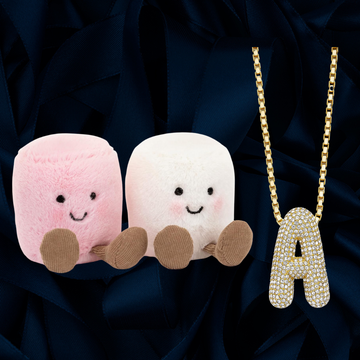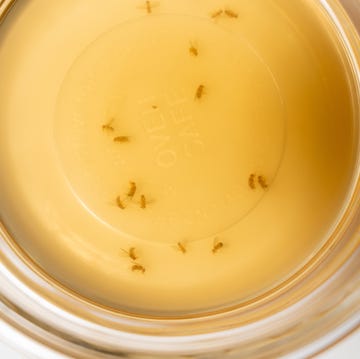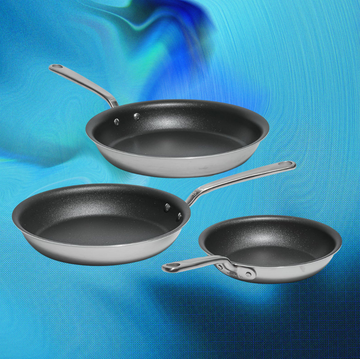Jump to:
- What does "seasoning" your cookware mean?
- How do I season my cast iron cookware?
- Do I need to season my cast iron pan if it’s preseasoned?
- How do I clean my cast iron cookware?
- Can I use soap on my cast iron pan?
- How often should I reseason my cast iron cookware?
- Can I skip reseasoning my pan if I cook fatty foods in it?
- Why trust Good Housekeeping?
The name cast iron is extremely literal: It's created when molten iron is poured into a mold and allowed to cool (a.k.a. cast) to form a shape — in this case, a pan, skillet, griddle or other type of cookware. The resulting product is incredibly durable and can absorb and transfer heat effectively, making it great for cooking, which is why generations of cooks have loved using cast iron pans. But untreated iron will oxidize — rust — when exposed to oxygen and moisture, so you need to season your cast iron cookware to prevent rusting.
What does "seasoning" your cookware mean?
Seasoning is the process of applying thin layers of fat to the surface of the pan and then heating to polymerize them. In lay terms, to polymerize the fat means to change its chemical structure so that it becomes a hardened layer that helps protect the pan and makes it naturally nonstick. As more layers build up over time, the pan develops a patina and becomes more nonstick.
As cookware experts in the Good Housekeeping Institute Kitchen Appliances and Innovation Lab, we've seasoned countless pans, both as trained cooks in our personal lives and for the Lab's cast iron and carbon steel skillet tests. We are constantly reseasoning pans, and we have one method that we find the most simple and effective.
How do I season my cast iron cookware?
If you're seasoning your pan for the first time, follow these steps:
Step 1: Clean the pan.
Set your oven to 350˚F to 400˚F. While it heats, wash the pan with dish soap and water.
Step 2: Dry thoroughly.
Dry the pan well with a clean cloth, or place it on a burner over medium heat and then let it cool completely.
Step 3: Coat with oil.
Once the pan has cooled, use a paper towel to apply a very thin layer of a neutral oil (such as canola or vegetable oil) over the inside and outside of the pan, including the handle. You should wipe away any excess so you can no longer see any oil; you want it buffed in such that the pan looks dry again. Any pools or droplets of oil can get sticky when hardened.
Step 4: Heat.
Place a half-sheet pan on the bottom rack of your preheated oven to catch any drips; place the cast iron skillet upside down on the top rack. Bake for 40 to 60 minutes.
Step 5: Repeat.
Carefully remove the hot pan from the oven. Using tongs to hold a folded paper towel to protect your hands, coat the pan with another thin layer of oil, buff well and repeat the bake. Do this one or two more times for a total of three to four coats of oil. The pans should look dark and shiny but not visibly oily.
Do I need to season my cast iron pan if it’s preseasoned?
If your cast iron pan comes preseasoned, it means the manufacturer has handled the first round of protection, and the pan is ready to use out of the box. Strictly speaking, you do not have to season it to get started, but you do have to season the pan throughout its life. And even preseasoned pans will perform better as you cook with and care for them.
How do I clean my cast iron cookware?
Once you've built up a nice patina, you want to properly clean and season the pan.
Step 1: Empty the pan.
Pour any cooled fat into the trash (never into the drain). Gently scrape out any food remnants or browned bits, and then wipe out the pan. You can also use the salt method, which Kitchen Appliances Lab Director Nicole Papantoniou endorses: Sprinkle the pan with kosher salt (it's coarser than table salt) and scrape up any food debris with a sturdy, flat-edge spatula. Then empty the pan and wipe it clean.
Step 2: Wash.
The step above might be enough to clean your pan. If not, it is safe to wash your cast iron by hand as needed. You can also use a mild dish soap, but you want to avoid scrubbing too hard, which can mechanically wear away the seasoning. And you should never soak it in water or wash it in a dishwasher.
Step 3: Dry thoroughly.
Wipe well with a dry cloth. You can also place the pan on the stovetop over medium heat for about 30 seconds or until any visible water evaporates. Once fully dry, turn off the heat. Let the pan cool before storing or seasoning.
Can I use soap on my cast iron pan?
Yes, it's safe to use soap on cast iron. But there is a caveat: You don't want to scrub too hard when you're washing. The enduring advice to avoid soap began when soaps contained lye, which would damage the patina of the pan. Modern soaps are milder, but you can scrub away the layers if you are too aggressive with your cleaning tools. Also note that soaps designed to fight grease — while fine for a quick wash of the pan — can wash away the fats from rich foods, so you might not retain all the benefits that you would if you just wipe out or only rinse the pan after cooking.
How often should I reseason my cast iron cookware?
If you simply wipe out the pan after use or give it a quick rinse with water only, the seasoning in the pan should be fine. But you will likely want to reseason your pan any time you wash it with soap. The same advice as above applies: Take a moment to dry the pan completely, give it a swipe with oil and heat it. For quick maintenance seasoning, you can heat the pan briefly over medium heat on the stovetop and let the pan cool. The multi-stage seasoning process is necessary only if you notice that foods are starting to stick or if you see any rust.
Can I skip reseasoning my pan if I cook fatty foods in it?
Yes, this is mostly true. Cooking fatty foods in your cast iron cookware does help to season the pan — especially if you're able to merely wipe any browned bits from the pan. But if food sticks and you wash the pan with soap, you'll need to make a judgment call on whether you should add additional oil.
Why trust Good Housekeeping?
Sarah Gregory is a trained cook who has been cooking with and maintaining cast iron for 25 years. She leads our carbon steel cookware tests, which require seasoning (and/or reseasoning) numerous pans.
Nicole Papantoniou is the director of the Kitchen Appliances and Innovation Lab. She has cared for several cast iron pans for more than a decade. She stored one on her stovetop for years to ensure she never put it away damp.








